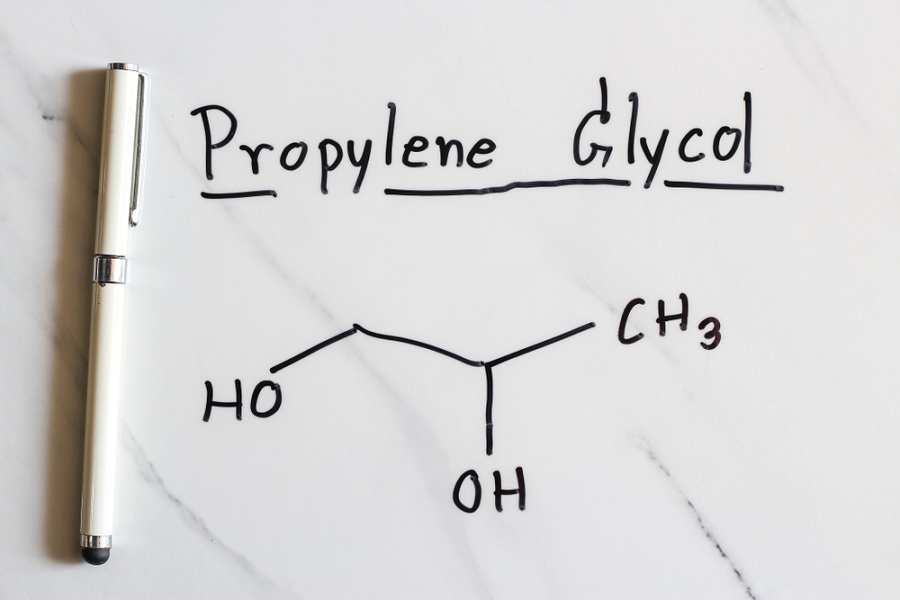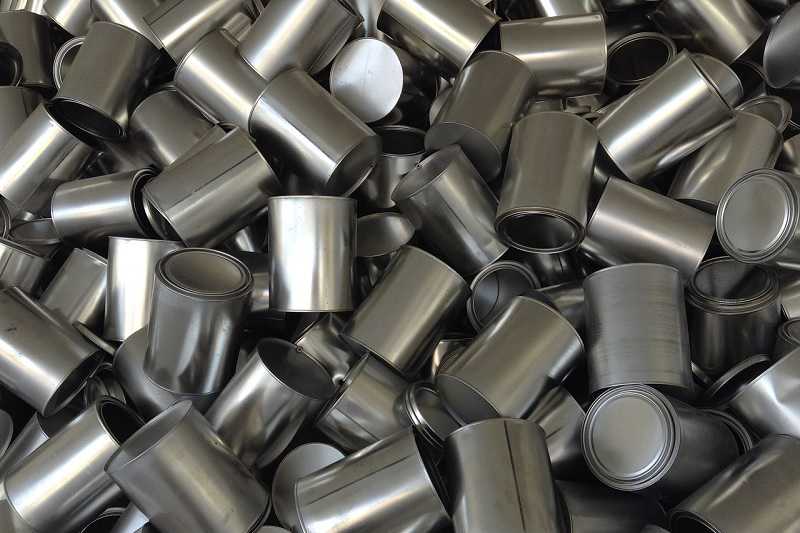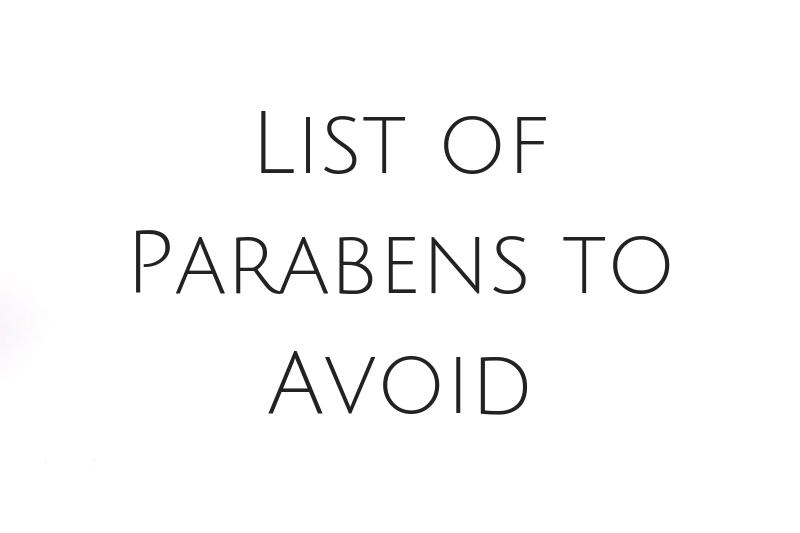Anyone passionate about understanding the chemicals in their food has probably come across the ingredient propylene glycol. This is an extremely common food additive that is legal in the United Kingdom.
But what foods contain propylene glycol in the UK? Why is this compound added to food? And is propylene glycol safe to eat?
This article provides a comprehensive list of foods with propylene glycol and explains its use within these products.
We also discuss the safety of the additive to help you decide whether or not to eliminate this substance from your diet.
What Common Foods Contain Propylene Glycol?
Propylene glycol is used in many processed packaged foods. It is a preservative and so is commonly found in products that have a long shelf life.
Some of the most common examples are dried soups, salad dressings, baking mixes, and dried soups. You can find a more comprehensive list of foods containing propylene glycol below.
The food additive isn’t only found in foods; propylene glycol is also lurking in your drinks! In the United Kingdom, it’s found in many soft drinks and powdered drink mixes. Alcoholic beverages can also include propylene glycol to help extend their shelf life.
List of Foods with Propylene Glycol
Propylene glycol is used in many long-life foods in the UK. Below is an extensive list of some of its most common uses within the food industry, according to WebMD:
- Seasoning and spice blends
- Dried soup mixes
- Dried baking mixes (cakes, cookies, pancakes, etc.)
- Powdered drink mixes and milkshakes
- Flavoured teas
- Salad dressings
- Food colouring and flavouring extracts
- Dried desiccated coconut
- Premade cake icing
- Flavoured popcorn
- Marshmallows
- Sour cream
- Mass-distributed bakes desserts
- Potato salad
- Highly processed snacks
- Dairy products such as cheese
- Pre-prepared meals
- Most fast foods
Why Is There Propylene Glycol in my Food?
As you can see, propylene glycol is used in a wide range of products in the UK. But why is this chemical used in so many food and drink products?
Unlike many additives, propylene glycol serves multiple functions. It helps improve food production, taste, appearance, and shelf life.
Its versatility makes it an excellent preservative for UK food manufacturers.
Here is a closer look at some of its potential uses within food and drink products:
- Anti-Caking Agent: In dried food and drink mixes (such as soups, cakes, pancakes, and milkshakes), propylene glycol acts as an anti-caking agent. This means it prevents the mixes from forming clumps and being unusable.
- Antioxidant: Oxidation is a chemical reaction responsible for the deterioration of the quality and taste of food. In all preserved food, propylene glycol acts as an antioxidant, slowing down this chemical reaction and improving the products’ shelf lives.
- Moisture Preserver: Propylene glycol acts as a moisture preserver and stops foods from drying out. This is important for products such as marshmallows and dried coconut shreds. It also serves this purpose in salad dressings.
- Carrier: It is unlikely propylene glycol is the only additive added to your foods. Other additives, colours, or flavourings are included to help improve texture and flavour. Propylene glycol acts as a carrier for these agents, allowing them to dissolve into the food.
- Emulsifier: An emulsifier is a substance that helps to stabilise foods to prevent the separation and suspension of liquids. Propylene glycol is lipophilic (fat-loving) and oil soluble, helping to prevent salad dressings from separating.
- Stabiliser: Adding propylene glycol to gluten and starches helps to strengthen the dough and stops it from breaking down under certain conditions. It also helps to thicken substances during and after production.
Is Propylene Glycol a Safe Food Additive?
The UK Food Standards Agency recognises propylene glycol as a safe food additive. It is also recognised as safe within other areas of the world.
It is “generally recognised as safe” (GRAS) by the Food and Drug Administration in the US and is legally permitted for use as a food additive by the European Food Standards Agency (EFSA).
Based on the assessments of these regulatory bodies, the answer is yes; propylene glycol is a safe food additive.
Toxicity from this substance is rare, and large quantities of the substance must be consumed for any adverse effects to arise.
Nevertheless, there are some potential health risks to be aware of, as listed below.
Kidney and liver problems
Anyone with a healthily liver and fully functioning kidneys can quickly eliminate the small amount of propylene glycol consumed through the diet.
However, anyone with underlying kidney and liver problems may struggle to metabolise the substance. This can lead to a build of lactic acid in the body and cause acidosis.
Allergic reactions
Most people can consume propylene glycol without any issues. However, as with all substances, there is a risk of being allergic to the additive.
Thankfully, allergies to propylene glycol are uncommon and generally mild. The allergies most commonly cause skin inflammation or rashes on the face or body, known as allergic dermatitis.
Increases risk of heart attacks
Studies have found that when propylene glycol is injected in high amounts, it causes an increased heart rate. In turn, this increases the risk of heart attacks.
This effect is very unlikely when consuming foods containing propylene glycol, as propylene glycol in food is ingested rather than injected. Still, considering it is worthwhile when deciding whether or not to eliminate this additive from your diet.
How to Avoid Propylene Glycol
As a common food additive in the United Kingdom, it is difficult to eliminate this substance from your diet if you eat processed foods. Nevertheless, you can check food labels to see whether the compound is included.
It will always be listed as an ingredient when present, but it might be called one of its chemical names. Below are other names of propylene glycol to look out for:
- 1,2-propanediol
- 1,2-dihydroxypropane
- Methyl ethyl glycol
- Trimethyl glycol
The best way to avoid eating propylene glycol is to avoid any foods listing the compound (or any of its alternative names) on the product packaging.
Yet as mentioned above, nearly all processed foods contain this additive. As such, you’ll need to eat more whole foods and natural products to truly cut down on your propylene glycol consumption.

Hannah is a freelance content writer passionate about natural health, mindfulness, and the environment. She shares her enthusiasm for a conscious lifestyle on Naturaler, inspiring others to take the steps towards a more natural and fulfilling life



